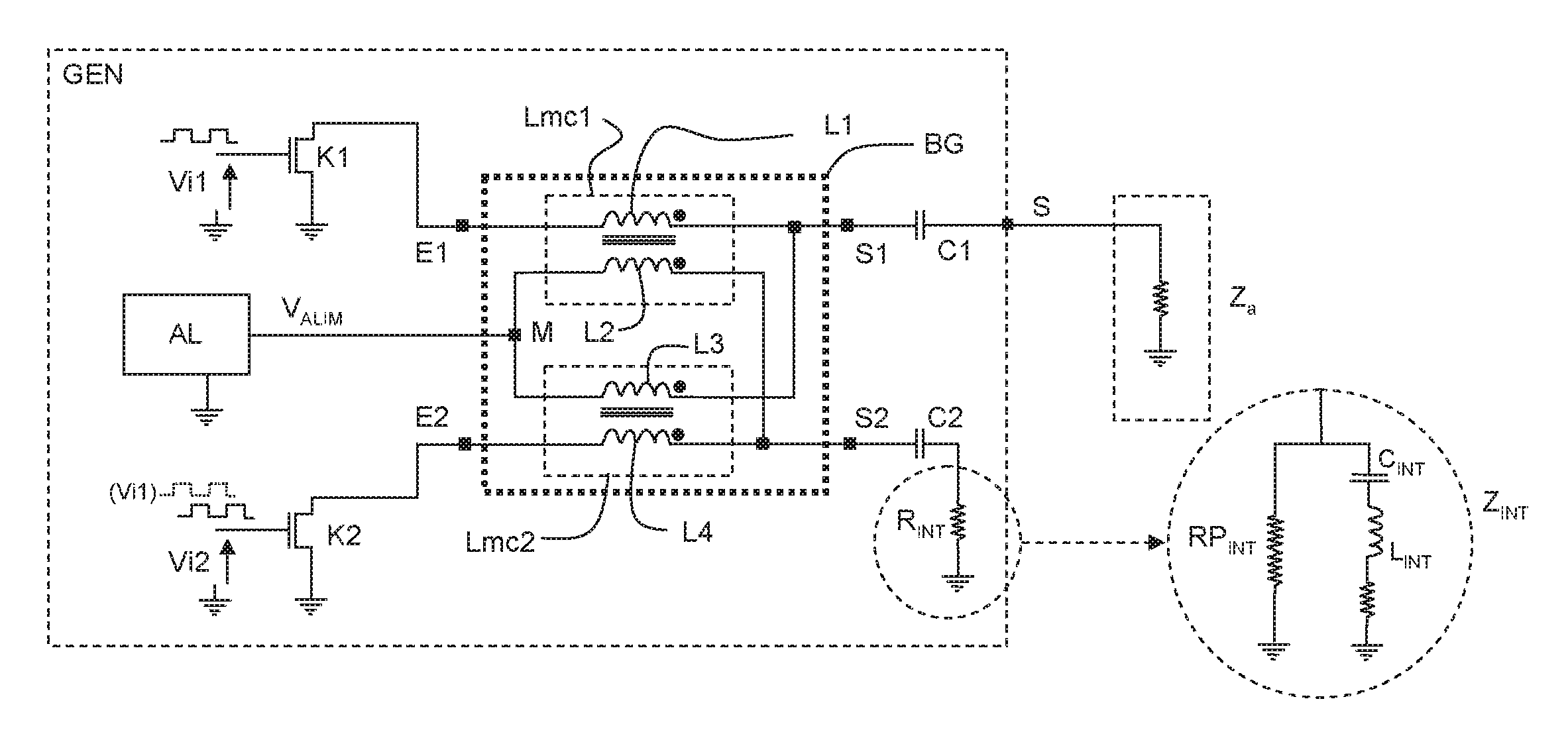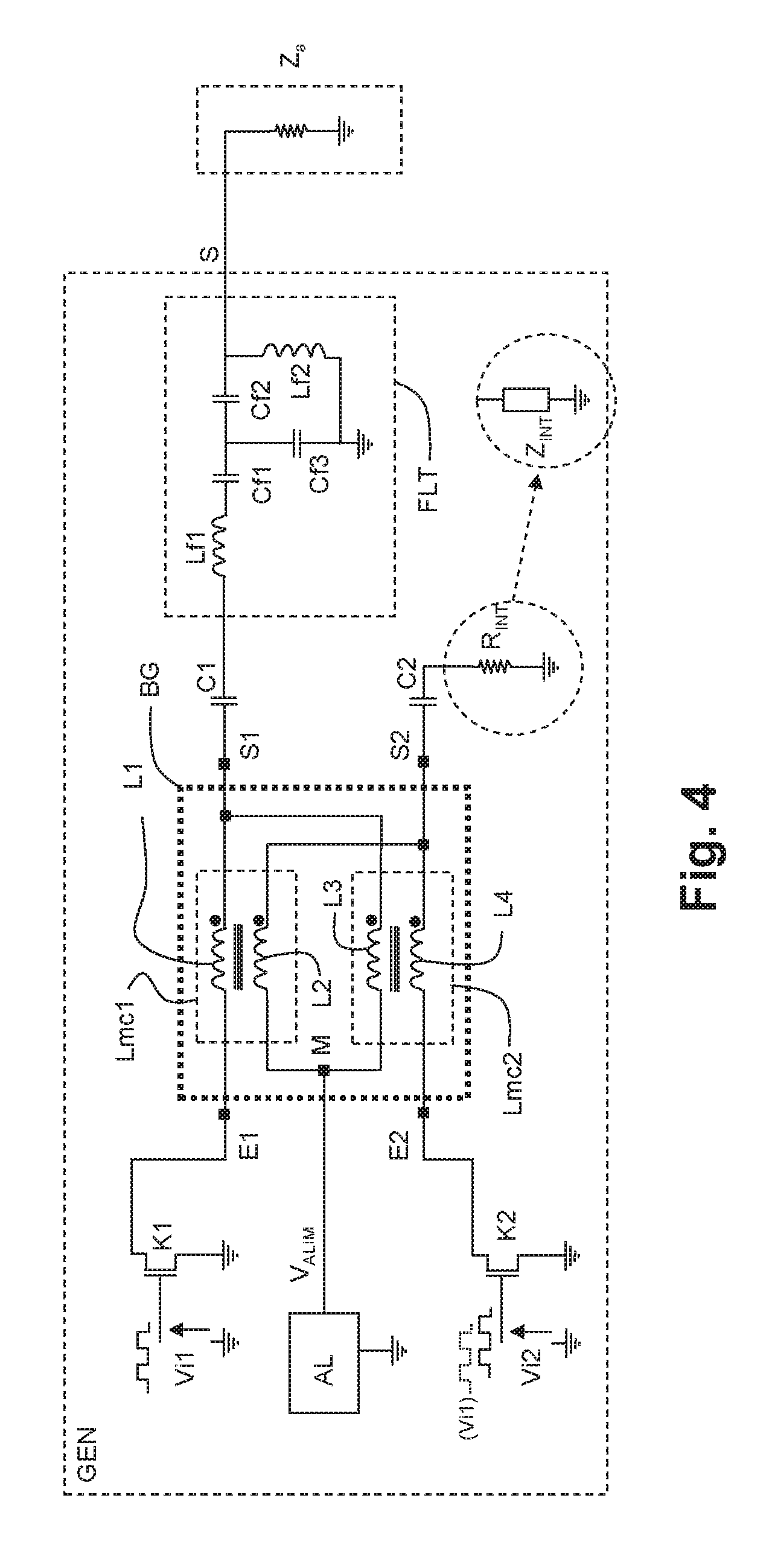High-frequency generator
- Summary
- Abstract
- Description
- Claims
- Application Information
AI Technical Summary
Benefits of technology
Problems solved by technology
Method used
Image
Examples
Embodiment Construction
[0036]In FIG. 1, the basic composition of the emitting part of a base station in a high-frequency communication system is shown. In the following it is considered to be an identification system for RFID tags in which an exchange of data takes place between the base station and objects bearing tags. The invention is however not limited to this application: the invention can even be applied outside of any data exchange system, for example for a remote power supply by induction of electronic circuits without their own power supply, or to recharge a rechargeable battery of a stand-alone system via induction.
[0037]The emitting part of the base station comprises a high-frequency generator GEN and an inductive antenna ANT. The generator is symbolized by a voltage source Es supplying an alternating signal at a high frequency F, this signal being able to be modulated, for example in amplitude or in phase; this voltage source is accompanied by an impedance in series rs representing the intern...
PUM
 Login to View More
Login to View More Abstract
Description
Claims
Application Information
 Login to View More
Login to View More - R&D Engineer
- R&D Manager
- IP Professional
- Industry Leading Data Capabilities
- Powerful AI technology
- Patent DNA Extraction
Browse by: Latest US Patents, China's latest patents, Technical Efficacy Thesaurus, Application Domain, Technology Topic, Popular Technical Reports.
© 2024 PatSnap. All rights reserved.Legal|Privacy policy|Modern Slavery Act Transparency Statement|Sitemap|About US| Contact US: help@patsnap.com










